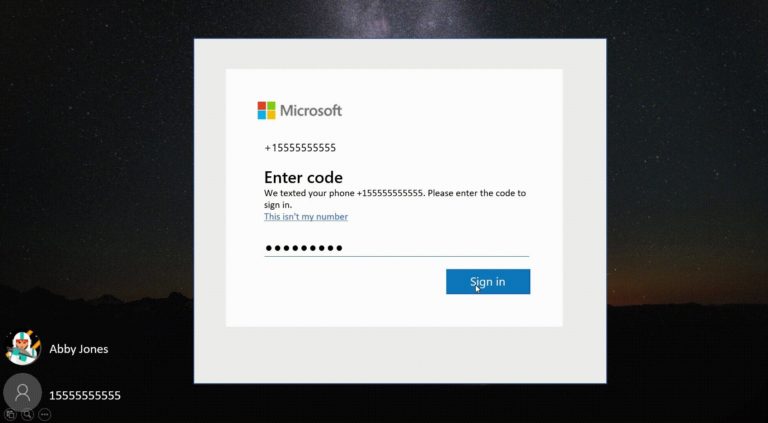Microsoft has made Windows 10 Insider Build 18305 available. It’s packed with new features that will be part of the next major feature update in the first half of 2019.
Besides the introduction of the Windows Sandbox, which we wrote about yesterday, the new build also eliminates the use of a password to log in to Windows 10. At least if you’re using two-step verification.
As soon as you enter your account name, the operating system automatically knows whether two-step authentication has been activated for your account. You will then be asked to log in with your smartphone, without having to enter a separate password.
Telephone number
To use the feature, your Windows account must be linked to your phone number, for example via the Word app or another Microsoft service on your smartphone. Then you can use an SMS code to log in and set the account to Windows 10.
After setting up your account, you can use Windows Hello Face, Fingerprint, or a PIN code (depending on your device’s capabilities) to sign in to Windows 10. No password required, it sounds in Microsoft’s blog post.
Passwordless login is currently only available for Insiders working with Windows 10 Home. The function will be rolled out to other versions at a later date, Microsoft says.
Furthermore, build 18305 introduces a simplified Start menu, new Office app, security improvements, a new clipboard, changes to the task manager and Windows Explorer, recommended troubleshooting, and several general improvements and bug fixes.
ARSO
Specifically for enterprise users, Microsoft adds Automatic Restart and Sign On (ARSO). This automatically logs on a user after an update to complete the setup and then locks the PC.
This should remove the hurdles surrounding updates from end users, so that they can find their PC in the state they left it in, without interruption.
The feature is made available for Cloud Domain Joined devices that have BitLocker enabled, and TPM 2.0 and SecureBoot are supported.
Related: Windows 10 B, C or D update: what is the difference?
This news article was automatically translated from Dutch to give Techzine.eu a head start. All news articles after September 1, 2019 are written in native English and NOT translated. All our background stories are written in native English as well. For more information read our launch article.